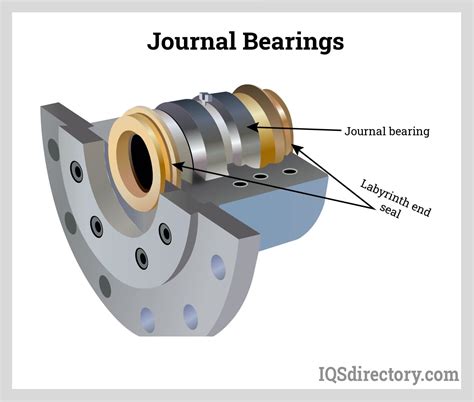Unlocking Fluid Efficiency: A Comprehensive Guide to Hydraulic Bearings
Hydraulic bearings, precision-engineered components, play a pivotal role in the smooth functioning of countless machines, from high-speed industrial pumps to advanced medical devices. These bearings harness the power of fluid to create a frictionless interface, enabling efficient operation and significantly extending equipment lifespan.
Understanding Hydraulic Bearings
Hydraulic bearings are characterized by a thin film of fluid (typically oil or water) that separates the bearing surfaces. This fluid film, created by a pressurized fluid supply, supports the load, preventing direct contact between the bearing surfaces. The fluid film also acts as a lubricant, reducing friction and wear.
Types of Hydraulic Bearings
There are several types of hydraulic bearings, each designed for specific applications. Here are the most common types:

Journal Bearings: These bearings support radial loads, with the fluid film separating the journal (shaft) from the bearing housing.

Thrust Bearings: Designed to withstand axial loads, thrust bearings use a fluid film to separate the thrust surfaces.
Hydrostatic Bearings: These bearings rely on an external pressurized fluid supply to generate the fluid film. They offer high load capacity and precision.

Hydrodynamic Bearings: Hydrodynamic bearings use the motion of the shaft to generate the fluid film. They are typically used in high-speed applications.
Benefits of Hydraulic Bearings
Hydraulic bearings offer numerous advantages over traditional rolling element bearings:
Reduced Friction and Wear: The fluid film effectively separates the bearing surfaces, minimizing friction and wear, leading to extended equipment life.
High Load Capacity: Hydraulic bearings can handle heavy loads, making them ideal for applications requiring high load-bearing capabilities.
Low Noise and Vibration: The fluid film dampens noise and vibration, resulting in quieter and smoother operation.
High Precision: Hydraulic bearings offer excellent precision, making them suitable for applications where precise motion control is crucial.
Self-Lubricating: The fluid film eliminates the need for external lubrication, reducing maintenance requirements and costs.
How Hydraulic Bearings Matter
Hydraulic bearings are critical components in various industries, including:

-
Industrial machinery: Pumps, compressors, turbines, and gearboxes all rely on hydraulic bearings for efficient operation.
-
Medical equipment: MRI machines, surgical robots, and medical imaging devices utilize hydraulic bearings for precise and reliable motion.
-
Automotive: Hydraulic bearings are found in water pumps, power steering systems, and suspension components.
Tips and Tricks
-
Proper Lubrication: Ensure the hydraulic bearing is always supplied with the correct fluid type and quantity.
-
Temperature Control: Monitor the operating temperature of the hydraulic bearing to prevent excessive wear.
-
Filtration: Use appropriate filtration systems to remove contaminants from the fluid, extending bearing life.
-
Sealing: Ensure proper sealing to prevent fluid leakage and contamination.
Common Mistakes to Avoid
-
Overloading: Avoid exceeding the load capacity of the hydraulic bearing.
-
Contamination: Protect the bearing from contaminants such as dirt, debris, and moisture.
-
Incorrect Assembly: Follow the manufacturer's instructions for proper bearing assembly to ensure optimal performance.
Real-Life Stories of Hydraulic Bearing Adventures
The Curious Case of the Leaky Bearing
Once upon a time, an engineer noticed a hydraulic bearing that was leaking fluid excessively. After investigating, he discovered that the O-ring seal had failed, allowing fluid to escape. A quick replacement of the seal solved the issue, preventing further damage to the bearing.
The Tale of the Overloaded Bearing
In a factory, a hydraulic bearing failed prematurely. Upon examination, it was evident that the bearing had been overloaded, causing excessive wear and damage. The engineer reinforced the bearing housing to support the increased load, preventing similar failures in the future.
The Triumph of Precision Bearing
In a surgical robot, the hydraulic bearings played a vital role in ensuring precise and steady movements. The bearings' ability to dampen vibrations allowed the surgeon to perform delicate procedures with utmost accuracy, resulting in a successful outcome.
Tables
| Hydraulic Bearing Types |
Load Direction |
Fluid Supply |
| Journal Bearings |
Radial |
External |
| Thrust Bearings |
Axial |
External |
| Hydrostatic Bearings |
Axial or Radial |
External (Pressurized) |
| Hydrodynamic Bearings |
Axial or Radial |
Generated by Shaft Motion |
| Industries Using Hydraulic Bearings |
Applications |
Benefits |
| Industrial Machinery |
Pumps, Compressors, Turbines |
High Load Capacity, Low Noise |
| Medical Equipment |
MRI Machines, Surgical Robots |
Precise Motion Control, Dampened Vibration |
| Automotive |
Water Pumps, Power Steering Systems |
Extended Bearing Life, Reduced Maintenance |
| Tips for Maintaining Hydraulic Bearings |
Benefits |
| Proper Lubrication |
Extended Bearing Life |
| Temperature Control |
Prevents Excessive Wear |
| Filtration |
Removes Contaminants |
| Sealing |
Prevents Fluid Leakage |
FAQs
1. What is the main advantage of hydraulic bearings?
Hydraulic bearings reduce friction and wear, resulting in extended equipment lifespan and improved efficiency.
2. How do hydraulic bearings handle loads?
A thin fluid film separates the bearing surfaces, creating a frictionless interface and supporting the load.
3. What is the difference between hydrostatic and hydrodynamic bearings?
Hydrostatic bearings rely on an external pressurized fluid supply, while hydrodynamic bearings generate the fluid film using shaft motion.
4. Are hydraulic bearings suitable for high-speed applications?
Yes, hydrodynamic bearings are designed for high-speed applications, using the shaft's motion to create the fluid film.
5. How often should hydraulic bearings be serviced?
The maintenance schedule depends on the bearing type and operating conditions. Regular inspection and monitoring are recommended to ensure optimal performance.
6. What are the common causes of hydraulic bearing failure?
Overloading, contamination, improper assembly, and poor lubrication can contribute to hydraulic bearing failure.

